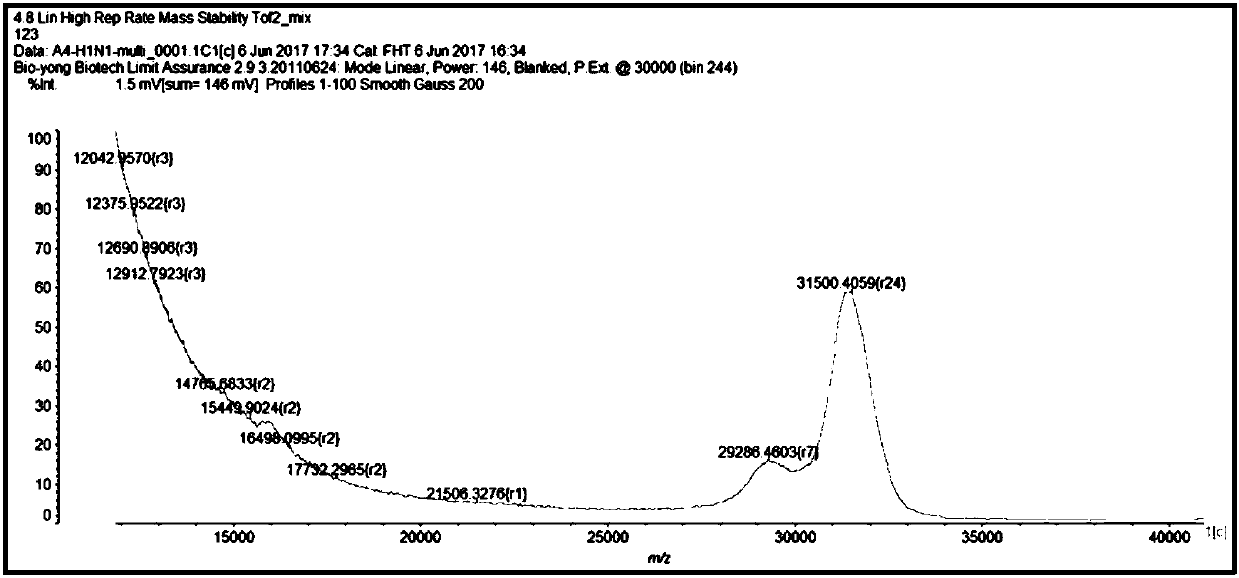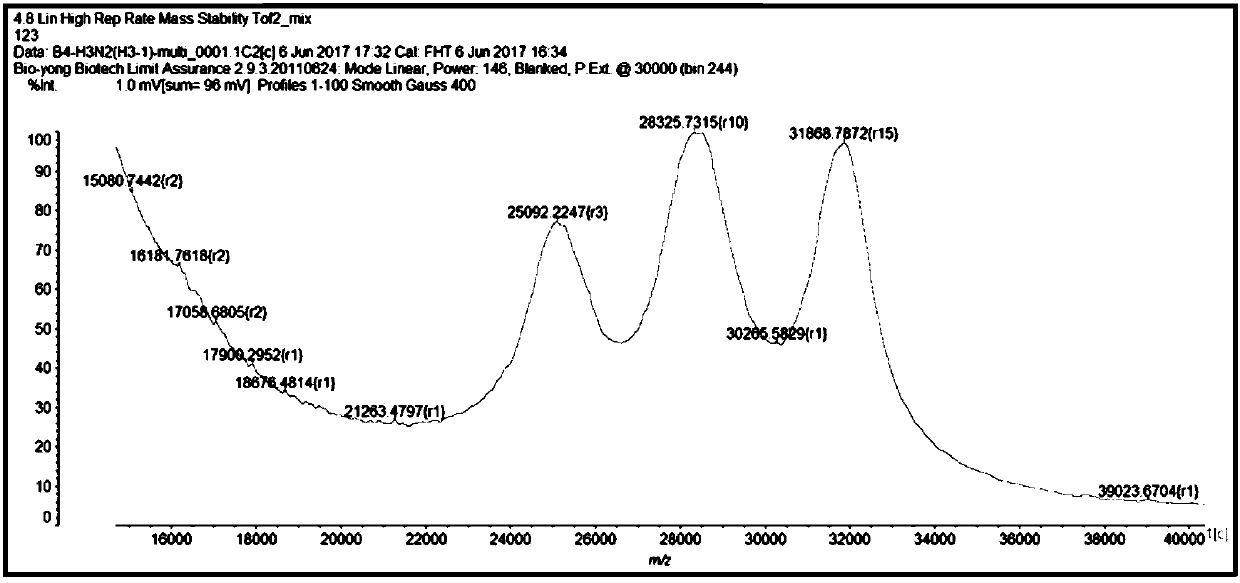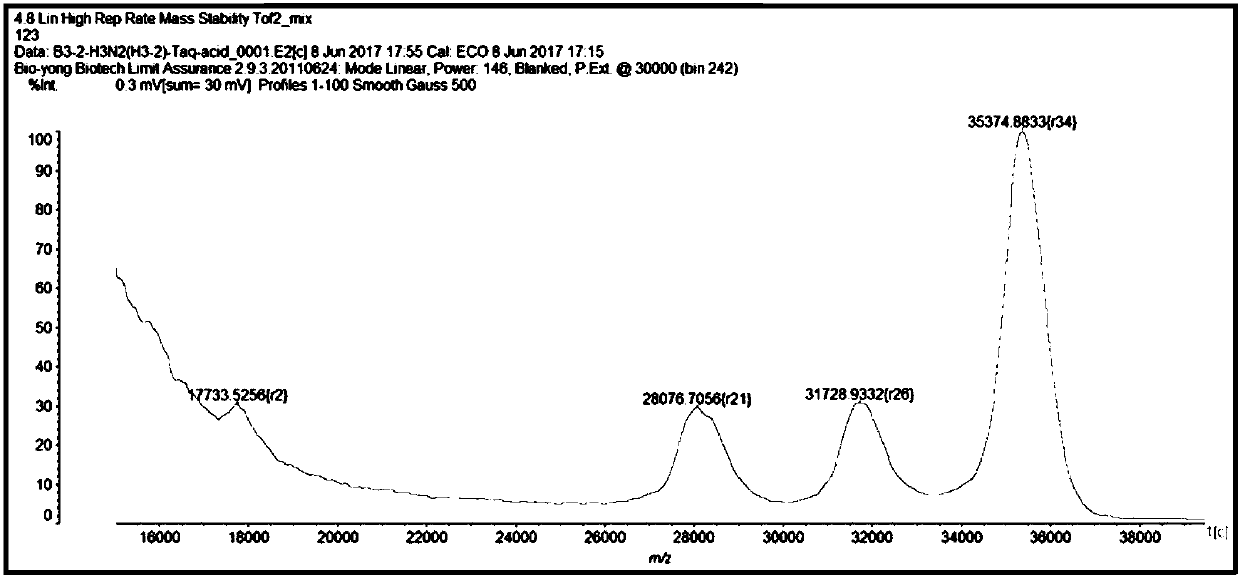Method for detecting multiple-PCR (Polymerase Chain Reaction) product of influenza A virus H7N9 through mass spectrometry, and product thereof
An influenza A virus and influenza virus technology are applied in the field of primer sets and kits for detecting influenza A, and can solve the problems of no reporting scheme, difficulty in teaching detection of influenza virus, and no reporting of specific targets of influenza virus.
- Summary
- Abstract
- Description
- Claims
- Application Information
AI Technical Summary
Problems solved by technology
Method used
Image
Examples
Embodiment 1
[0088] Example 1. Primer design
[0089] In order to detect influenza A viruses, the following 9 nucleic acid sequences of influenza A viruses of 4 common subtypes, H1N1, H3N2, H5N1 and H7N9, were collected. Extract viral RNA, design reverse transcription primers for the target detection segments (M, H1, H3, H5, H7, N1, N2, N9, etc.), and reverse transcribe these fragments into cDNA, then ligate it to the plasmid vector PmdTM19- T SimpleVector was transformed, and 9 plasmids containing the 9 nucleic acid sequences were synthesized.
[0090] After identification, the plasmid DNA was extracted, and the NanoDrop ND-2000 nucleic acid detector was used to measure the concentration of the plasmid DNA, and the DNA copy number was determined as the sensitive standard product quantitative mother liquor.
[0091] In the following sequence, the sequence corresponding to the primer selected in the present invention is underlined.
[0092] (1) H1 fragment of H1N1
[0093] Influenza A virus(A / canin...
Embodiment 2
[0142] Example 2. Two-fold PCR amplification of H1N1 subtype influenza A virus
[0143] 1. Synthesize the plasmids of the H1 and M fragments of the H1N1 subtype influenza A virus, and design the specific primers corresponding to their conservative sequences. The plasmids and specific primers are all synthesized by Shanghai Jierui Bioengineering Co., Ltd. The plasmid was prepared into a 10ng / μL working solution, and the primers were prepared into a 10μM working solution. As shown in Table 1, the following primer pairs were used.
[0144] The first primer pair H1:
[0145] Upstream primer:
[0146] SEQ ID NO. 1: 5'-TGCTGGATCTGGTATTATC-3',
[0147] Downstream primer:
[0148] SEQ ID NO. 2: 5'-TGGGAGGCTGGTGTTTATAG-3';
[0149] The second primer pair M:
[0150] Upstream primer:
[0151] SEQ ID NO. 3: 5'-GGCGTTTTGAACAAACCGTC-3',
[0152] Downstream primer:
[0153] SEQ ID NO. 4: 5'-CAATCCTGTCACCTCTGACT-3'.
[0154] 2. PCR amplification
[0155] 1) The composition of the PCR reaction system is as f...
Embodiment 3
[0165] Example 3. Triple PCR amplification of H3N2
[0166] 1. Synthesize the plasmids of the H3, N2 and M three fragments of the H3N2 subtype influenza A virus, and design the specific primers corresponding to their conservative sequences. The plasmids and specific primers are all synthesized by Shanghai Jierui Biological Engineering Co., Ltd. The plasmid was prepared into a 10ng / μL working solution, and the primers were prepared into a 10μM working solution. As shown in Table 1, the following primer pairs were used.
[0167] The first primer pair H3-1:
[0168] Upstream primer:
[0169] SEQ ID NO.5: 5'-CCGGATGAGGCAACTAGTGA-3',
[0170] Downstream primer:
[0171] SEQ ID NO.6: 5'-GCAGCAAAGCCTACAGCAAC-3';
[0172] The second primer pair N2:
[0173] Upstream primer:
[0174] SEQ ID NO.9: 5'-TATCATCCCCAGTGACACAG-3',
[0175] Downstream primer:
[0176] SEQ ID NO.10: 5'-TGGGAACCAAACAAGTGTGC-3';
[0177] The third primer pair M:
[0178] Upstream primer:
[0179] SEQ ID NO. 3: 5'-GGCGTTTTGAACAAAC...
PUM
 Login to View More
Login to View More Abstract
Description
Claims
Application Information
 Login to View More
Login to View More - R&D
- Intellectual Property
- Life Sciences
- Materials
- Tech Scout
- Unparalleled Data Quality
- Higher Quality Content
- 60% Fewer Hallucinations
Browse by: Latest US Patents, China's latest patents, Technical Efficacy Thesaurus, Application Domain, Technology Topic, Popular Technical Reports.
© 2025 PatSnap. All rights reserved.Legal|Privacy policy|Modern Slavery Act Transparency Statement|Sitemap|About US| Contact US: help@patsnap.com



